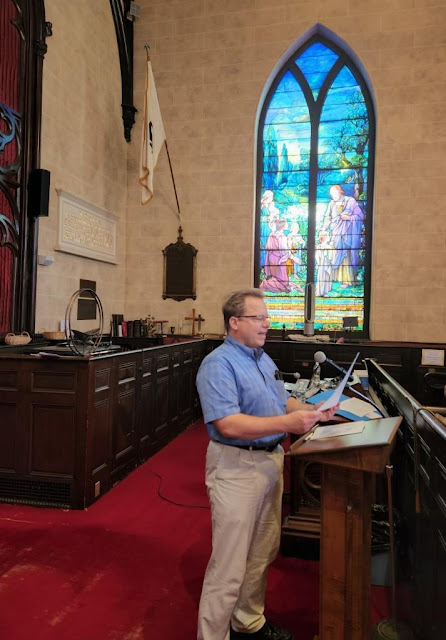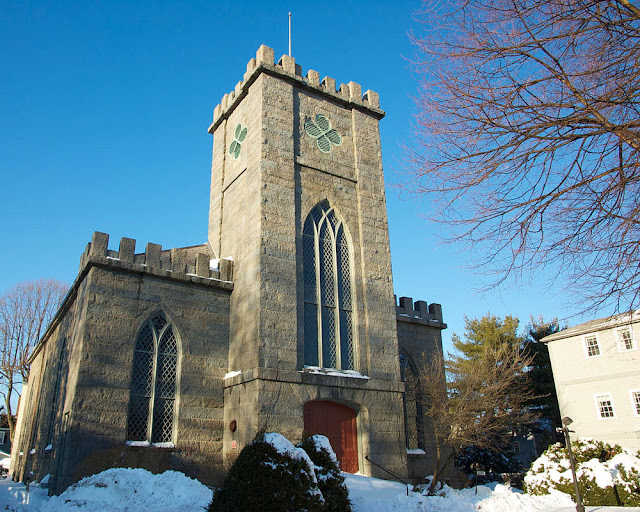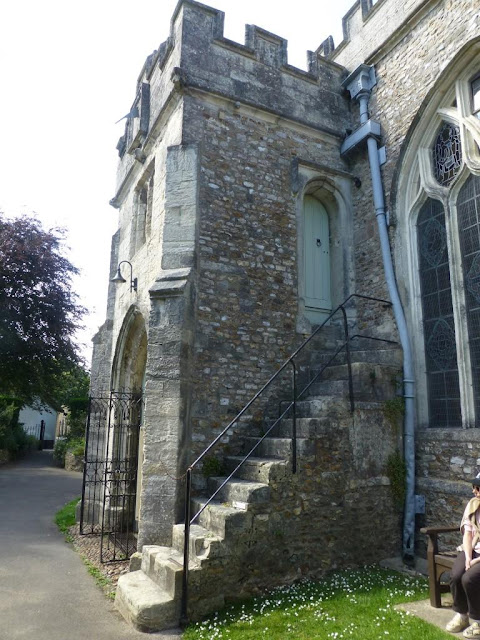Just one of the many books which mention Roger Conant
Our
Roger Conant Club in East Budleigh, Devon, UK, is planning to launch a website
devoted to the founder of Salem. I suggested that a section should include
books, articles and website material devoted to Roger Conant, so I was invited
to make a list. Well, I started, and this is what I have so far. There may be
the odd mistake, and I’m sure that there could be many more items to be added.
Please let me know if you think I’ve missed something.
I
wonder whether the character of Roger Conant appears in a film.
Anyway,
here’s my list:
Manuscripts and other documents:
The Conant Family papers are archived at the Peabody Essex Museum near Salem
https://www.pem.org/
Books
Bailyn,
Bernard – The Barbarous Years, The
Peopling of British North America: The Conflict of Civilizations, 1600-1675, New York: Alfred A. Knopf 2012
Bartlett, Sarah S. Roger Conant in America: Governor and
Citizen, An Historical
Address Delivered at the Conant Family Reunion, Hotel Vendome, Boston, June 13,
1901. See Roger Conant in America as Governor and citizen by Sarah Bartlett
https://ia800200.us.archive.org/14/items/rogerconantiname00bart/rogerconantiname00bart.pdf
Bradford, William – History of Plymouth Plantation. Edited, with notes, by Charles Deane, Boston: Little, Brown, and Company, 1856
[Does Bradford refer to Roger Conant, Book II, p.170?]
https://babel.hathitrust.org/cgi/pt?id=mdp.39015014559044&view=1up&seq=198
Conant, Frederick Odell – A
history and genealogy of the Conant family in England and America, thirteen
generations, 1520-1887,
Portland 1887.
https://archive.org/details/historygenealogy00cona/page/n4
Conant, Thomas – Upper Canada Sketches, Toronto: William Briggs, 1898 [pages 9-20]
https://www.gutenberg.org/files/64749/64749-h/64749-h.htm
Endicott, Charles M. (1847) Memoir of John Endicott, first governor
of the colony of Massachusetts Bay (John Endicott and Roger Conant co-led Salem Village after John Winthrop moved the capital of the Massachusetts Bay Colony to Dorchester.)
https://tile.loc.gov/storage-services/public/gdcmassbookdig/memoirofjohnende00endi/memoirofjohnende00endi.pdf
Felt, Joseph B. –
Annals of Salem, Salem: W. & S.B. Ives; Boston: James Munrow & Co.,
1845
https://www.noblenet.org/salem/reference/wp-content/uploads/2016/01/Annals-of-Salem-Felt-v.1.pdf
Gardner, Frank A. – Roger Conant:
Salem, 1626. The Leader of the Old Planters, Salem, Mass:
Roger Conant Co-operative Bank, 1926
Gardner, Frank A. – Roger Conant, Family Edition Supplement.
Contents: A Visit to East Budleigh, by Wallace B. Conant; The Old
Planters’ Grant of 1635: Notes communicated by Grace Patten Conant;
collaboration in research by Alice G. Lapham; The Old Planters’ Path and
the First Landing Place on Bass River, Salem, Mass [?], n.d.
Hubbard, William – A General History of New England,
Boston, 1848
https://archive.org/details/generalhistoryof00hubb
Lapham, Alice Gertrude – The
Old Planters of Beverly Massachusetts and the Thousand Acre Grant of 1635, 1930, Carlisle, Massachusetts: Applewood Books
Leavitt, E.W.
(1890) A Genealogy of One Branch of the Conant Family, 1581-1890 (printed privately)
https://archive.org/details/genealogyofonebr00leav_0)
Little, George Thomas – Genealogical and Family History of the State of Maine,
New York: Lewis Historical Publishing Company, 1909
http://dunhamwilcox.net/me/me_bio_conant.htm
Rose-Troup, Frances – John White, The Patriarch
of Dorchester, Dorset and The Founder of Massachusetts, 1575-1648, With An
Account Of The Early Settlements In Massachusetts, 1620-1630, New York & London: G.P. Putnam’s Sons, 1930
Shallop, Benjamin - The Founding of Salem: City of Peace. Paperback, 144 pages. The History Press, 2022
Sheppard, Lilian – Raleigh’s Birthplace: The Story
of East Budleigh, Budleigh Salterton: The Granary Press, 1983 [pages 45-46]
Shipton, Clifford K. – Roger
Conant: A Founder of Massachusetts, Cambridge: Harvard University Press,
1944.
https://www.seekingmyroots.com/members/files/G001153.pdf
Stone, Edwin Martin – History of Beverly, Civil and Ecclesiastical: From Its Settlement in
1630 to 1842, Boston: J. Munroe, 1843
https://archive.org/details/historyofbeverly00ston
Thornton, John Wingate –
The
Landing at Cape Anne or The Charter of the first permanent colony on the
territory of the Massachusetts Company,
Boston; Gould and Lincoln; New York: Sheldon, Lamport and Blakeman, 1854
https://archive.org/details/landingatcapean00thor
Webber, Charles H. & Nevins,
Winfield S. –
Old Naumkeag: an historical
sketch of the city of Salem, and the towns of Marblehead, Peabody, Beverly,
Danvers, Wenham, Manchester, Topsfield, and Middleton, Salem: A. A. Smith & company; Boston, Lee
& Shepard, 1877
https://archive.org/details/oldnaumkeaghisto00webb/page/n8
Roger
Conant as depicted in fiction:
Olson,
Charles – The Maximus Poems, New York: Jargon/Corinth, 1960
Hawthorne,
Nathaniel – Main Street in The Snow-Image and other Twice-Told Tales,
1852
https://www.gutenberg.org/files/513/513-h/513-h.htm
Articles
Daniel, David – Why did Jeff Conant fly 5,286 miles from Berkley,
CA. to visit us last month? in Otter Valley Association Newsletter, vol.38.1
(January 2017), pages 7-8.
https://www.ova.org.uk/sites/default/files/common/Newsletter%202017-01.pdf
Downes, Michael – A tribute to East Budleigh's other hero in Otter Valley Association Newsletter, Summer 2022, pages 13-15.
Sabine, Lorenzo - Report on the Principal
Fisheries of the American Seas, in Cod and Whale Fisheries: Report of Hon. Thomas
Jefferson, Secretary of State, United States. Department of the Treasury pages
108-113, 293-298. Originally published in 1853.
https://shareok.org/handle/11244/35684 (House-32-2-Executive-23.2-Serial-676.pdf)
Websites
https://augustinesalley.wordpress.com/ [Joseph Bolton]
https://www.ova.org.uk/article/east-budleigh-%E2%80%93-historical-sketch [Vivien Brenan – East Budleigh – Historical Sketch]
http://www.lyndon-estate.co.uk/history/index.html
[Lyndon Conants, UK]
https://conant400.blogspot.com/2022/07/conant-connections-past-and-present-at.html [Michael Downes]
https://climbingthemooneytree.wordpress.com/2018/02/05/roger-conant [Kelcey Mooney]
Gloucester historian Mary Ellen Lepionka kindly contributed the following three essays to my blog site, as follows:
Roger Conant on Cape Ann Part I: The Dorchester
Company [12 March 2019]
https://conant400.blogspot.com/2020/01/roger-conant-on-cape-ann-part-i.html
Roger Conant on Cape Ann Part II: The Rescue Party [January 2020]
https://conant400.blogspot.com/2020/02/roger-conant-on-cape-ann-part-ii-rescue.html
Roger Conant on Cape Ann Part III: Conant at
Naumkeag and Salem Village [February 2020]
https://conant400.blogspot.com/2020/02/roger-conant-on-cape-ann-part-iii.html
http://miller-aanderson.blogspot.com/2011/07/roger-conant-1592-1679.html [Jim McAllister]
https://mises.org/library/what-really-happened-plymouth [Murray N. Rothbard]
http://www.opcdorset.org/fordingtondorset/Files/DorchesterRevJohnWhite1575-1648.html [Michael Russell]
https://www.genealogy.com/forum/surnames/topics/conant/458/ [Lawrence Taber, 2003: Roger Conant Tree: A Must See]
http://sites.rootsweb.com/~nyterry/hubbard/willhubjr_chron.html [N.Y. Terry]
http://www.dustyhills.net/aqwg74.htm [Tim Farr - see section on Roger Conant]
https://www.johnwashingtonartist.com/blog.html [John Washington - see Summer 2020: the story of the painting 'Blessed Are The Peacemakers'.]






































